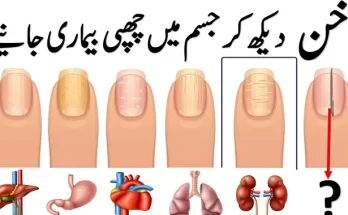
A bright, white smile is something many people desire. It’s a sign of good health and can boost your confidence in social settings. However, maintaining that gleaming smile isn’t always easy, especially when plaque, a sticky film of bacteria, builds up on your teeth. Plaque dulls your smile and can lead to more serious dental problems like cavities and gum disease if not properly managed.
What is Plaque?
Plaque is a soft, sticky film that forms on teeth when bacteria in your mouth mix with food particles and saliva. These bacteria produce acids that can harm tooth enamel, leading to cavities and gum disease. If plaque isn’t removed regularly, it can harden into tartar, a more stubborn substance requiring professional cleaning.
Why is Plaque Harmful?
Plaque is not just unsightly; it can cause significant damage to your oral health. The acids produced by the bacteria in plaque can wear down your tooth enamel, leading to cavities. If plaque is allowed to accumulate along the gum line, it can cause gingivitis, an early stage of gum disease. Untreated gingivitis can progress into periodontitis, a severe form of gum disease that can lead to tooth loss.
How to Get Rid of Plaque
Brush Regularly and Properly
The foundation of plaque removal is regular brushing. Dentists recommend brushing your teeth at least twice a day for two minutes each time. Use a toothbrush with soft bristles to avoid damaging your gums and fluoride toothpaste to help strengthen your enamel. Make sure to brush all surfaces of your teeth, including the front, back, and chewing surfaces. Don’t forget to brush your tongue, as it can harbor bacteria that contribute to plaque formation.
Floss Daily
Flossing is an essential step in plaque removal that many people overlook. Brushing alone cannot reach the spaces between your teeth, where plaque tends to accumulate. Flossing once a day helps remove food particles and plaque from these areas, reducing your risk of cavities and gum disease. Be gentle while flossing to avoid injuring your gums.
Use Mouthwash
An antimicrobial mouthwash can help reduce the bacteria in your mouth, decreasing the amount of plaque that forms on your teeth. Look for a mouthwash that contains fluoride to help strengthen your enamel. Rinse with mouthwash after brushing and flossing to give your teeth extra protection against plaque.
Limit Sugary and Starchy Foods
Sugary and starchy foods are a primary food source for the bacteria that cause plaque. When you consume these foods, the bacteria in your mouth produce acids that can damage your teeth. To reduce plaque formation, limit your intake of sugary snacks, sodas, and starchy foods like bread and chips. If you do indulge in these foods, try to brush your teeth or rinse your mouth with water afterward to minimize plaque buildup.
Stay Hydrated
Drinking water throughout the day helps wash away food particles and bacteria from your mouth, reducing plaque buildup. Water also stimulates saliva production, which is your mouth’s natural defense against plaque. Saliva contains enzymes that help neutralize the acids produced by plaque bacteria and repair early signs of tooth decay.
Visit Your Dentist Regularly
Regular dental check-ups are crucial for preventing plaque buildup and maintaining good oral health. During these visits, your dentist or dental hygienist will remove any plaque and tartar that has accumulated on your teeth, especially in areas that are difficult to reach with brushing and flossing alone. Most dentists recommend visiting every six months, but your dentist may suggest more frequent visits if you are prone to plaque buildup.
How to Whiten Your Teeth
While getting rid of plaque is essential for oral health, many people also want to achieve a whiter, brighter smile. Here are some effective methods to whiten your teeth:
Use Whitening Toothpaste
Whitening toothpaste contains mild abrasives and chemicals that help remove surface stains from your teeth. While they won’t change the natural color of your teeth, they can help make your smile brighter by removing stains caused by coffee, tea, and smoking. Be sure to use a whitening toothpaste approved by dental professionals to ensure it is safe for daily use.
Try Whitening Strips or Gels
Over-the-counter whitening strips and gels are a popular choice for at-home teeth whitening. These products contain peroxide-based bleaching agents that can lighten the color of your teeth. Follow the instructions carefully to avoid overuse, which can lead to tooth sensitivity.
Consider Professional Whitening Treatments
If you’re looking for more dramatic results, professional whitening treatments performed by your dentist may be the best option. These treatments use stronger bleaching agents than those found in over-the-counter products and can whiten your teeth several shades in a single session. Your dentist can also provide custom-fitted whitening trays for at-home use, allowing you to achieve professional results at your convenience.
Avoid Foods and Drinks That Stain Teeth
Certain foods and drinks, like coffee, tea, red wine, and berries, are notorious for staining teeth. If you want to keep your teeth white, try to limit your consumption of these items. When you do indulge, rinse your mouth with water or brush your teeth afterward to minimize staining.
Quit Smoking
Smoking is not only harmful to your overall health, but it is also a major cause of tooth discoloration. The nicotine and tar in cigarettes can cause yellow or brown stains on your teeth that are difficult to remove. Quitting smoking can significantly improve the color of your teeth and benefit your oral health.
Maintaining a bright, healthy smile requires consistent care and attention. By following the tips outlined above, you can effectively remove plaque and prevent its buildup, leading to healthier teeth and gums. Additionally, incorporating whitening methods into your routine can help you achieve the bright smile you desire. Remember, regular visits to your dentist are key to catching and addressing any potential issues early, ensuring your smile stays both healthy and beautiful for years to come.






